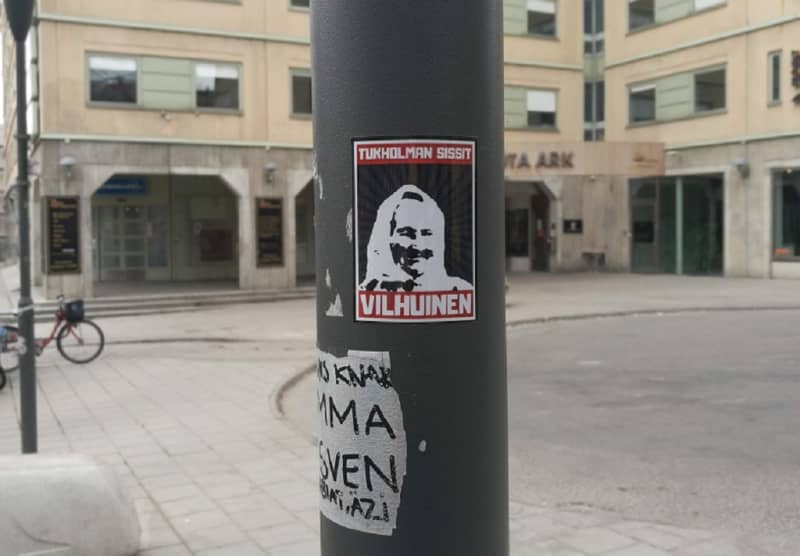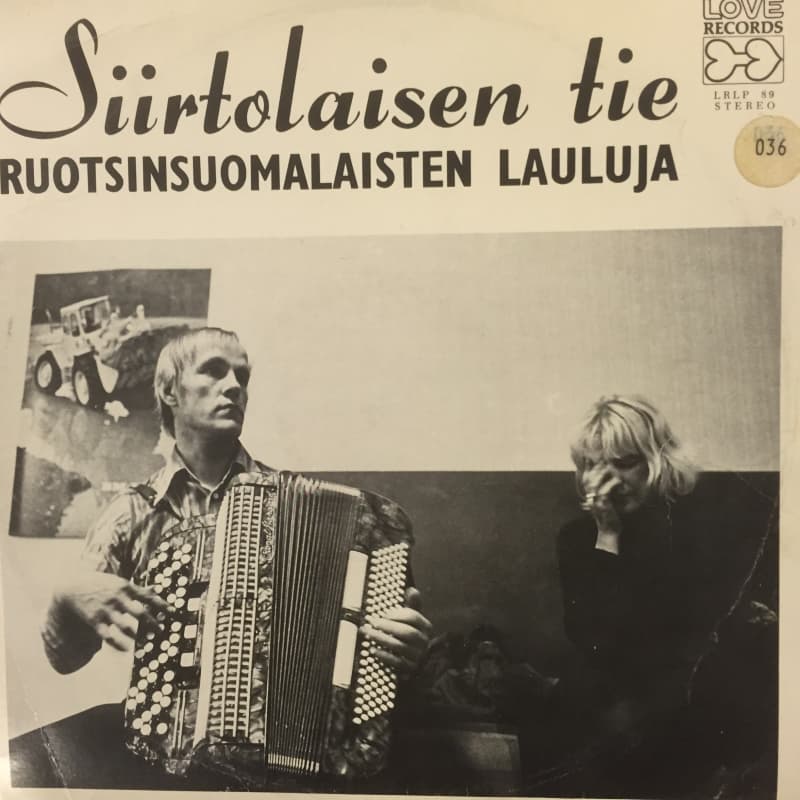Researcher Tuire Liimatainen traced the ethnopolitical wave in social media that arose when Sweden recognized its Finns as a national minority at the turn of the millennium.
\”I was born in Sweden, I grew up in Sweden, I have always only spoken Swedish at home, but we have a lot of Finnish culture, and even though we don’t speak Finnish, we are still a typical Finnish family.\”
In the study, Swedish-Finnishness turned out to be very diverse, fragmented, internally contradictory and even a little divided, Liimatainen sums up. In the title of his dissertation, he has ended up talking about \”Sweden’s Finnishness\”.
Liimatainen wanted to find out how the ethnic boundaries of Swedish-Finnishness are maintained and challenged and how they change. He was interested in how the fact that they were recognized twenty years ago as a national minority is reflected in the identity of Finno-Swedes.
He got his data from two social media ethnopolitical campaigns and two Instagram accounts of street activists.
Finland pushed, Sweden pulled
In the 1950s, Swedish factories were crying out for labor from abroad. Their doors were open to Finns thanks to the joint Nordic labor market agreement concluded in 1954. You could go on the trip, even if the job was not ready.
Emigration from Finland, which was undergoing structural change, was at its peak in the particularly bad year of unemployment in 1968, and the border was open to Finns even after that, even though Sweden slipped into recession and already in the late 1960s began to limit emigration from other countries than the Nordic countries.
If you draw a picture of the typical migrant of the 1960s and 1970s based on statistics, he was 20–40 years old, had little education and came from the countryside of Eastern or Northern Finland, whose small farms no longer provided a living.
Of course, it’s not the whole picture. We also went to Sweden with a sense of adventure, inspired by friends or to earn a little better, even if there was a job in Finland. The threshold was lowered when there were many other leavers.
In total, around 530,000 Finns immigrated to Sweden over the course of a few decades. Most probably considered moving as a temporary solution, but life went on and about 230,000 stayed permanently in the western neighbor.
Swedish Finns are counted in three generations: those born in Finland and those with at least one parent or grandparent born in Finland. The third generation was included in the definition in the 21st century, the fourth was not. On this basis, Swedish-Finn actors order a calculation of the number of Swedish-Finns from Statistics Sweden. The latest estimate is 720,000.
According to Tuire Liimatainen, the narratives of the three generations are very strongly established in Swedish-Finnishness. The first generation that immigrated from Finland had a clear Finnish identity. The second generation had to negotiate between Finnishness and Swedishness. The third generation is proud of its Finnishness.
– In my research, however, there are many experiences even within generations. The first generation includes people born in the 1930s and 1940s until today. Migration to Sweden has never ended.
New immigrants born in Finland think about where they fit in that story of three generations, says Liimatainen.
– In the second generation, on the other hand, there are those who grew up in the 1960s and 1970s, whose cultural and linguistic environment was completely different from those who went to school in the 21st century after Sweden recognized the Finns as a national minority.
Awareness of the history and status of the Finnish language in Sweden was completely different for them, says Liimatainen

The Finns brought by the wave of migration were considered newcomers, immigrants as much as those from elsewhere. They were not seen or at least recognized as a continuation of the ancient history of Finns in Sweden.
The attitudes of the Swedes only started to change when people started coming to the country from more and more distant places. Studies from the 1980s show how new immigration from outside Europe, which was no longer work-related, affected both Swedes and Finns, says Tuire Liimatainen.
– When new groups came, people of Finnish background began to see themselves as closer to Swedes, as a Nordic group that belonged to Sweden. That was a really important factor in claiming minority status.
In the landmark year 2000, Sweden then ratified the European minority protection agreements. Sweden’s Finns, Mään-speaking peoples, Sámi, Romani and Jews were recognized as national minorities and their languages \u200b\u200bwere given the status of national minority languages.
It means, among other things, that according to the law Finnish elderly are entitled to care in Finnish and Finnish children must be admitted to day care in their own language.
The roots came out
Political changes have had a great impact on the self-image of Swedish-Finns, side by side with personal ties, says Tuire Liimatainen.
– Although a person can be very aware of his own Finnish background and his grandmother’s cottage in Finland can be important to him, at the same time the national minority recognition offers new kinds of roots.
The recognition highlighted the fact that the Finnish language and Finnishness have had a long history in Sweden; it has only been hidden by the assimilation policy, says Liimatainen.
– Work-based immigration after the Second World War has now become one part of a much bigger story about Finnishness in Sweden. At the same time as family ties to Finland are weakening, there are new points of attachment in the Swedish story.
The symbols adopted in the 21st century speak the same language – our own flag, which combines blue and yellow on a white background, and celebrating the birthday of the \”apostle of forest Finns\” on the national day.
Tuire Liimatainen’s research material comes from the social media campaigns of Swedish Public Radio’s Finnish-language Sisuradio and the Swedish-Finnish Youth Association, as well as the Instagram accounts of two grassroots activist groups from 2013–2019.
– Together, the materials tell about a new wave of ethnopolitics, which emerged strongly in the 2010s precisely because of national minority recognition and also because social media offered completely new ways to discuss identity, language and what a person feels they belong to, Liimatainen says.
Do you dare to speak Finnish, and if you don’t, why not, asked Sisuradio in 2013
The Swedish Finns’ umbrella organization RSN asked for its own
The anonymous Stockholm sissit activist group, which started its activities in 2017, has taken over space for the Finnish language with the stickers and posters it has pasted in public places, which the group has also photographed on its Instagram account. Guerrillas from Gothenburg also worked alongside for a while.
– Guerrillas in Stockholm strive to bring out the Finnish language and reveal buried layers of Finnishness in the Swedish street scene. It is through the language that people of Finnish background are encouraged to show that they are Finns, says Tuire Liimatainen.
The group also publicly points out if, in its opinion, the minority language law has not been followed somewhere.
Stockholm Guerrillas have borrowed their name from Finns called Slussen guerillas, who once kept a shelter in the shelters of Stockholm’s Slussen interchange.
They became synonymous with decadent alcoholism, fights and stabbings and the sale of dark bottles – and, in the opinion of many Swedes, perhaps Swedish-Finnishness in general. Guerrillas in Stockholm have translated the word with grumbles.
– They use a lot of humor, which is quite an effective tool in ethnopolitics. It appeals to shared feelings and common laughter, which can create a sense of community, says Liimatainen.

The Slussen multi-level interchange has been dismantled. Might the knife-wielding Finnish Kniv-Pekka, Puukko-Pekka, also be forgotten before long?
– Based on my data, Puukko-Pekka is not disappearing, but it is being given completely new meanings. The knife becomes a cultural symbol, which includes the rather painful history of Finns in Sweden, but at the same time it is taken as a sign of one’s own empowerment, Liimatainen answers.

The Swedish People’s Home was based on the idea that a monolingual society as much as possible is the safety of democracy. In their social media campaigns, Swedish-Finnish contemporary activists have wanted to break the mold that was available to Finnish immigrants as well.
– In my data, campaigning is liberal, anti-racist and left-wing activism. The social atmosphere, which emphasizes the idea that Sweden should have only one language and one people, is perceived as very limiting and even threatening in some way, says Tuire Liimatainen.
The data also includes many young people of second and third generation Finnish background who have other than just Finnish or Swedish linguistic and cultural roots.
– Especially in their stories, it is emphasized that the political atmosphere is worrying and also leads to the fact that they do not feel that they belong to Sweden or Finland, for example based on the color of their skin.
Polarization also divides Swedish-Finns
Political polarization was clearly visible in the recent parliamentary elections in Sweden. According to research, Swedish-Finns vote for the anti-immigration Sweden Democrats slightly more than the general population of Sweden. The party’s parliamentarians also have many people of Finnish background.
According to Liimatainen, the background is an understanding of history that emphasizes the work-based nature of Finnish immigration. The party choice is justified by the fact that work-based immigrants have been involved in building Swedish society, a people’s home.
– Over the decades, the work-based immigrant group has perhaps shifted politically to the right. When new immigrants and refugees come to Sweden, we want to protect the society that has been built together with the Swedes.
Acknowledging the shared history of Sweden and Finland has been important to the Swedish-Finnish national minority, and perhaps in a somewhat paradoxical way it is also in the right-wing discourse, says Liimatainen.
– Cultural heritage and history are also shared, but power struggles between the national minority and the majority society are missing.

